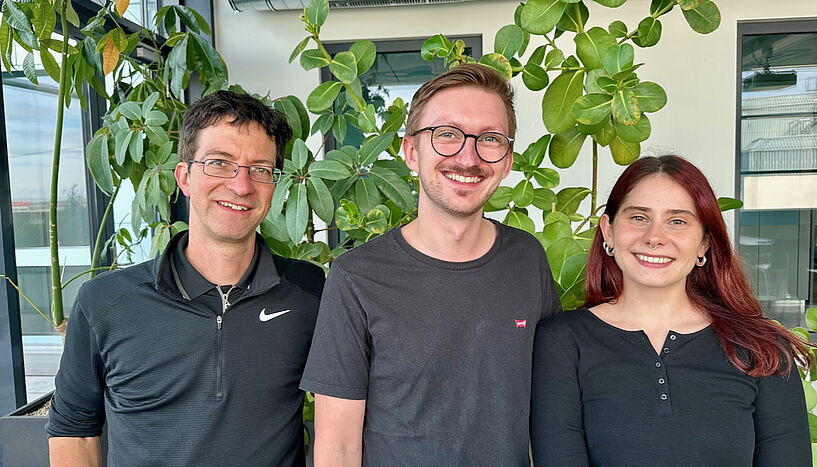
Fig. 1: From left to right: Max Perutz Labs group leader Florian Raible, first authors and doctoral students Alexander Stockinger and Leonie Adelmann. C: Max Perutz Labs
The return of cells to a stem cell-like state as the key to regeneration
Many living organisms are able to regenerate damaged or lost tissue, but why some are particularly good at this and others are not is not fully understood. Molecular biologists Alexander Stockinger, Leonie Adelmann and Florian Raible from the Max Perutz Labs at the University of Vienna have now made an important contribution to clarifying this question in a new study. In it, they explain the molecular mechanism of regeneration in marine worms and thus create a better understanding of the natural reprogramming ability of cells. The study has just been published in the renowned journal Nature Communications.
The ability to regenerate - from individual cell types to entire organs or complex tissues - is of crucial importance for all living species. The human body also regenerates, in short, dead cells are replaced by newly produced ones. In humans, for example, this is the case in the intestinal mucosa or the liver. However, other creatures have much stronger regenerative abilities. For example, annelids such as Platynereis dumerilii can regenerate entire parts of their posterior body after injury. The molecular mechanisms that control this process were hardly known until now. A new study led by molecular biologist Florian Raible from the Max Perutz Labs at the University of Vienna has now provided new insights. The scientists are not only gaining a better understanding of biology in general, but also of the natural reprogramming ability of cells.
The growth of new segments (body parts) in marine worms is controlled by a special growth zone, in which special stem cells are located. New segments then emerge by the division of these cells. But what happens if this special growth zone is lost due to an injury? In their new study, first authors Alexander Stockinger and Leonie Adelmann, together with the team from the Raible laboratory, show which molecular mechanisms can be used to renew a lost growth zone so that the marine worms can form new segments again. What is special about Platynereis dumerilii is that, unlike other species, regeneration in marine worms does not rely on existing stem cells. Instead, differentiated cells undergo what is known as dedifferentiation after the removal of the growth zone. "This means that these cells begin to return to a stem cell-like state within just a few hours in order to build up a new growth zone as quickly as possible," explains Leonie Adelmann, one of the two lead authors of the study.
The researchers also found that the gene expression in these newly formed stem cells actually differs from their precursor cells. "Excitingly, factors related to the transcription factors Myc and Sox2, which are also used in modern medicine to produce stem cells from differentiated human cells, also play a role here," says Alexander Stockinger, the other first author of the study.
"The concept of dedifferentiation was proposed over 60 years ago, but researchers at the time lacked the tools to test this idea. Now we have developed tools to understand dedifferentiation at the molecular level and compare it to this so-called 'reprogramming' of cells in modern medicine. This creates a solid basis for future studies," summarises Florian Raible, head of the working group at the University of Vienna.
One of the scientists' special strategies was to investigate cell states using the new method of single-cell RNA sequencing. This technique provided a new type of data set for investigating tissue regeneration. "Single-cell transcriptomics allows us to identify cell types and their states and show how they respond to the loss of body parts at an individual level. In our study, we also combined this technique with data from French colleagues who used fluorescent labelling of cells to help reveal which tissues ultimately arise from certain stem cells," explains Stockinger. "We discovered at least two different stem cell populations - one that regenerates tissues such as epidermis and neurons, and another that forms muscles and connective tissue," says Adelmann.
Original publication:
Stockinger AW, Adelmann L, Fahrenberger M, Ruta C, Özpolat BD, Milivojev N, Balavoine G, Raible F. Molecular profiles, sources and lineage restrictions of stem cells in an annelid regeneration model. Nat Comms.
Pictures:
Fig. 1: From left to right: Max Perutz Labs group leader Florian Raible, first authors and doctoral students Alexander Stockinger and Leonie Adelmann. C: Max Perutz Labs
Fig. 2: Visualisation of specific transcripts (green, magenta) confirmed the identification of different stem cell populations proliferating in regenerating worm tails (cyan). C: Leonie Adelmann
Fig. 3: Shortly after amputation of the posterior end, specialised epithelial cells begin to return to a special stem cell state (red). The missing segments are then recreated with the help of the newly formed growth zone. C: Leonie Adelmann, Universität Wien






